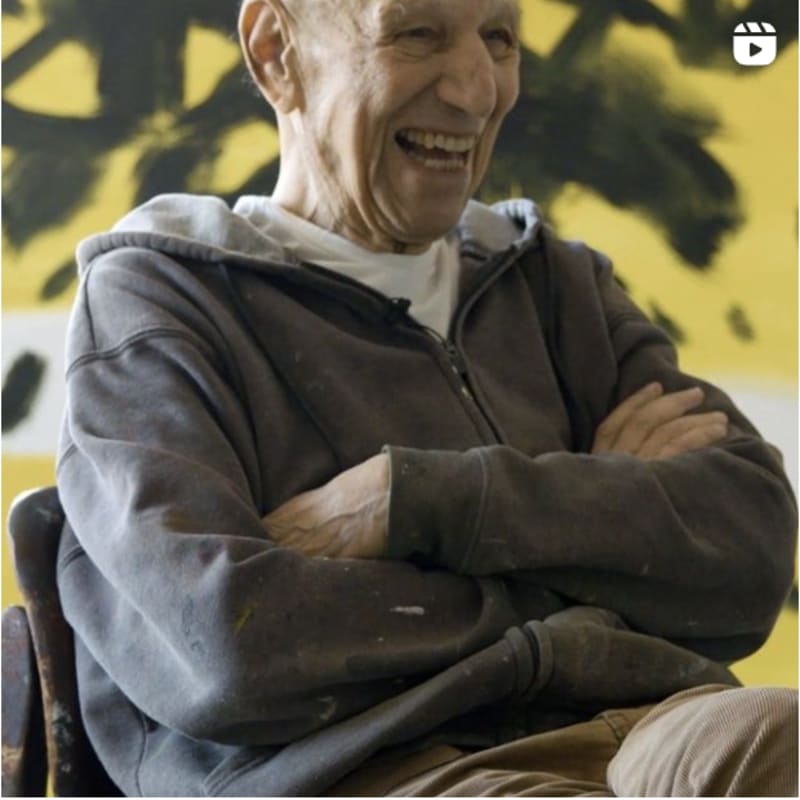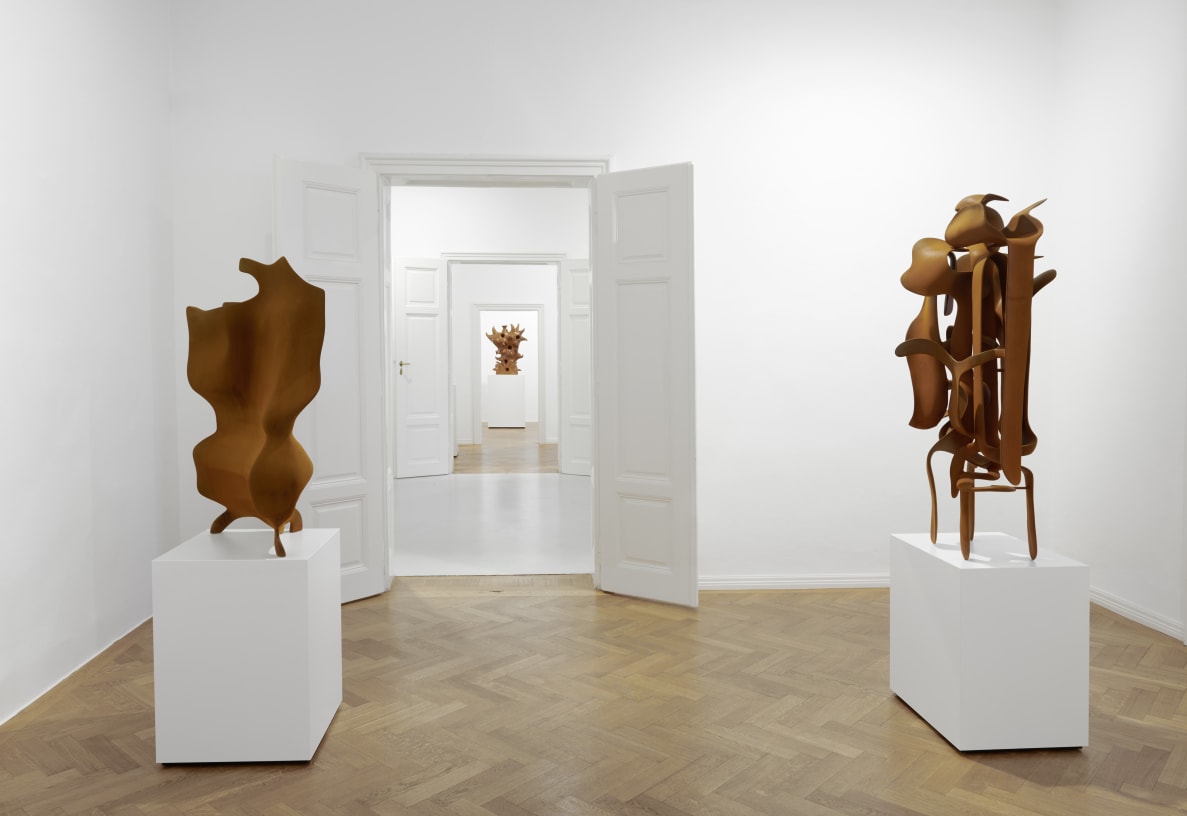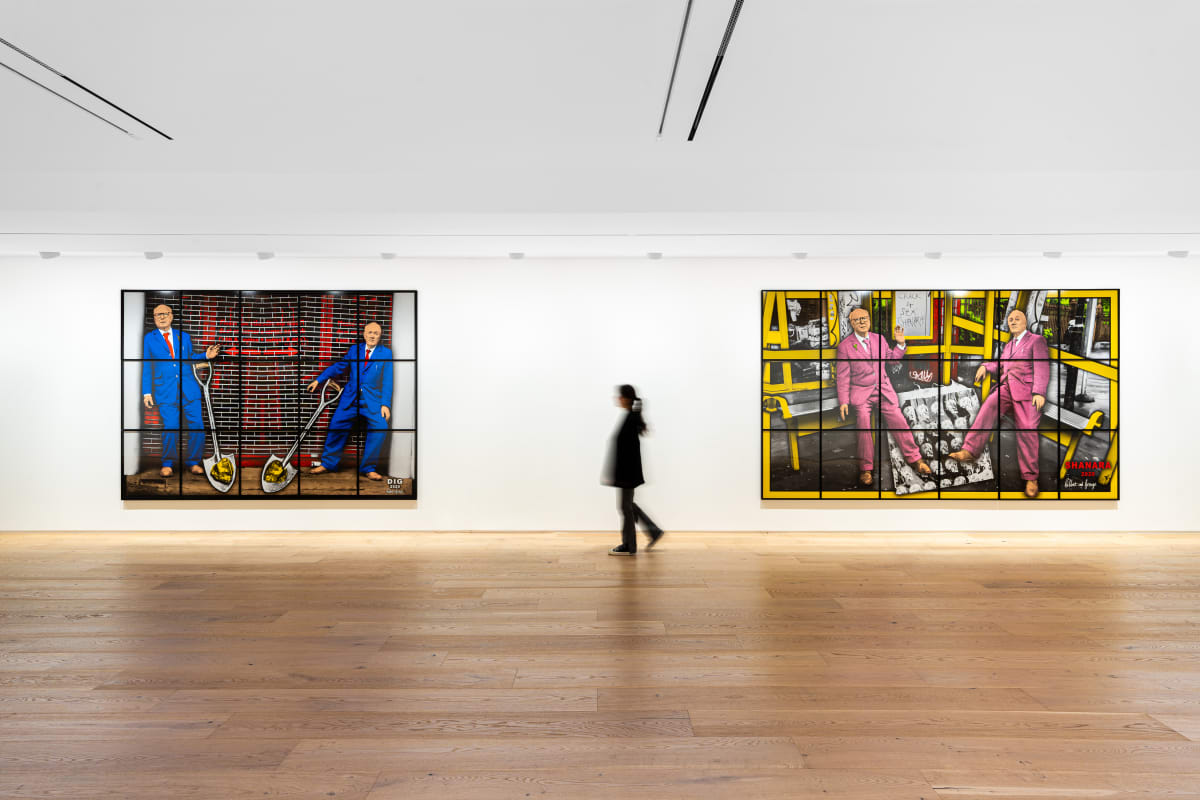Antony Gormley: Nightwatch
Materialised meditations on the potential of the embodied mind, these five Tankers enclose darkness – a darkness we experience directly when we close our eyes. This manifestation of an inward turn contrasts absolutely with the luminous volumes of the Kollegienkirche, where natural light is reflected on its vaults, walls and central dome.
The work faces the viewer as they enter through the open main doors of the church. The first (and most recognisable) work bows towards the visitor and the ground. The four subsequent works each physically expand this first attitude, allowing the body to transit from anatomy to architecture.
These five sculptures, now grouped as an independent work called Nightwatch, derive from a long examination of the body as our first place of dwelling. They were first exhibited at the Zentrum Paul Klee in Bern as part of Expansion Field (2014) and subsequently travelled to Thaddaeus Ropac in both Paris and Salzburg in 2015. Other Tanker explorations were shown as part of the exhibition Being at the Hall Art Foundation, Kunstmuseum Schloss Derneburg, Germany (2017–18).
In its present context, the work is purposefully engaged with how the viewer progresses into the body of the church, contradicting or transforming its liturgical function into an invitation to become aware of the body as a vehicle for sensate intelligence. The denial of the body’s idealisation and narrative function allows the works to become reflexive instruments.
Catholic ecclesiastical architecture utilises high vaulted spaces that encourage contemplation and concentrate the congregation on the ritual of transubstantiation. These buildings, whether Cologne Cathedral, Hagia Sophia, Basilica di San Vitale or Durham Cathedral, have always struck me as evocations of an expanded mind, the high domes and vaults being amplifications of the domes of our skulls, calling on us to recognise and employ the potency they contain.
The vast, luminous volumes of the Baroque masterpiece that is the Kollegienkirche are countered by the hermetic, orthogonal, modernist absolutism of the steel boxes of Nightwatch that contain darkness redolent of night. The implied invitation is this: to recognise that the transcendent is achieved at the expense of the grounded, first-hand experience of the embodied mind. It is this that causes human evolution to be contrary to the needs of the biosphere.















































































































































































